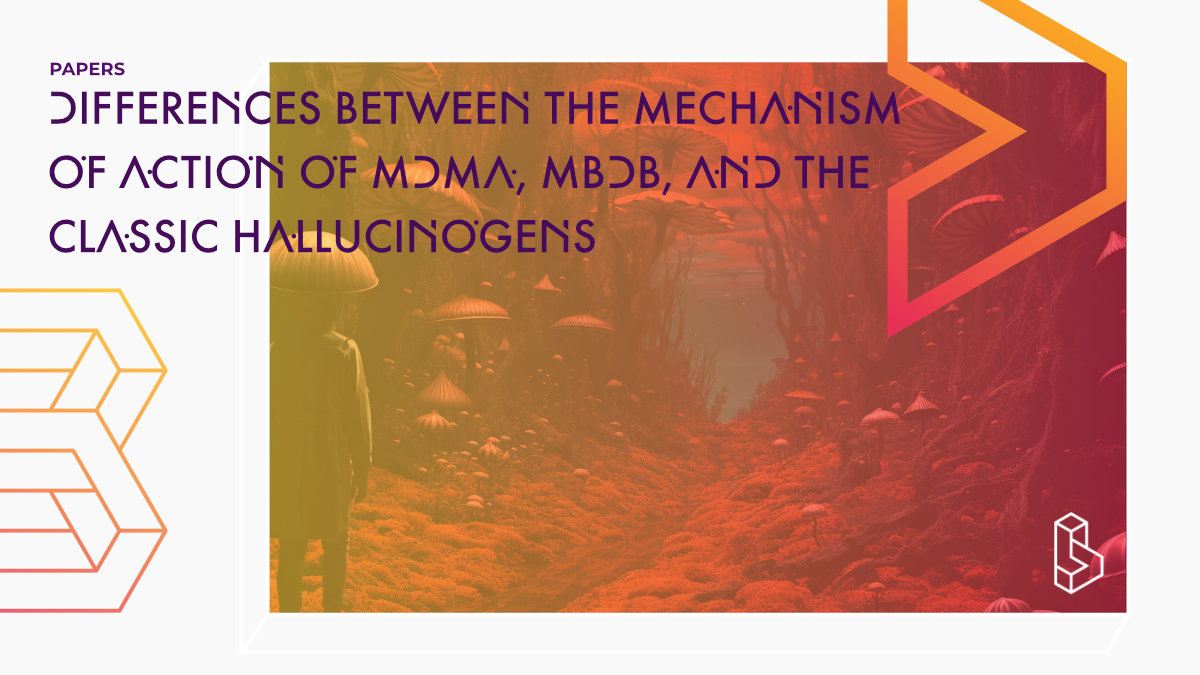This seminal paper (1986) introduces the classification ‘entactogens’ for MDMA and compounds with similar psychopharmacological action.
Abstract of Differences Between the Mechanism of Action of MDMA, MBDB, and the Classic Hallucinogens
From the introduction: “Nearly 70 years after its first synthesis, 3.4 -methylenedioxymethamphetamine (MDMA) was rediscovered. Although it had its more recent origin in the class of drugs that is generally defined as psychedelic or hallucinogenic, it clearly appears different from LSD. In humans. MDMA induces a state of reduced anxiety and lowered defensiveness that makes it attractive to therapists wishing to speed up the therapeutic process. However, as with all substances that produce pleasurable effects, it soon became popular as a recreational drug, and it went the same way as the psychedelics: into Schedule I.“
Author: David E. Nichols
Notes on Differences Between the Mechanism of Action of MDMA, MBDB, and the Classic Hallucinogens
“In summary, this article has presented evidence based on the known structure-activity relationship s of psychoactive compounds and studies of several biochemical parameters as well as behavioral data in rats that show that MDMA and particularly MBDB do not fit into the pharmacological classification of hallucinogen or psychedelic. Furthermore, these compounds differ sufficiently in their biochemical pharmacology profiles to distinguish them from amphetamine. Therefore, if MDMA and MBDB are not hallucinogens and are not simply stimulants, what are they? Based on their unique human psychopharmacology, it is believed that they represent a new drug category. There is no other known class of psychoactive agents that produces effects similar to these compounds. Thus, the present author’s research team has proposed that this new pharmacological class be designated entactogens.”
Summary of Differences Between the Mechanism of Action of MDMA, MBDB, and the Classic Hallucinogens
The widespread use of psychoactive drugs led to several reactions by governmental agencies and prescriptions against their use, but it was only a matter of time before new drugs appeared.
Although it had its more recent origin in the class of drugs generally defined as psychedelic or hallucinogenic, 3,4-methylenedioxymethamphetamine (MDMA) appears different from LSD.
The present author’s interest in MDMA stems from 17 years of research into how psychedelic substances work. He has developed a potency series consisting of several related plants.
Find this paper
https://doi.org/10.1080/02791072.1986.10472362
Paywall | Google Scholar | Backup | 🕊
Cite this paper (APA)
Nichols, D. E. (1986). Differences between the mechanism of action of MDMA, MBDB, and the classic hallucinogens. Identification of a new therapeutic class: entactogens. Journal of psychoactive drugs, 18(4), 305-313.
Study details
Compounds studied
MDMA
Topics studied
Chemistry
Neuroscience
Study characteristics
Theory Building
Authors
Authors associated with this publication with profiles on Blossom
David E. NicholsDavid E. Nichols is a researcher (specifically pharmacologist and medicinal chemist) at Purdue University (semi-retired in 2012). His psychedelics work has been ongoing since 1969.

